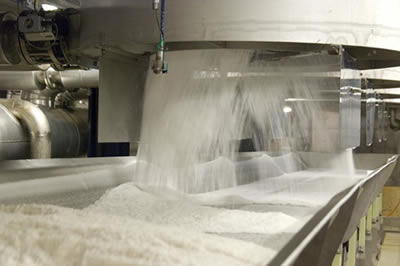Government urged to get Komenda Sugar Factory working
 There is a high level of enthusiasm and the general willingness among farmers and people within the catchment of the Komenda Sugar Factory to produce sugarcane for the factory, a research by the University of Cape Coast has showed.
There is a high level of enthusiasm and the general willingness among farmers and people within the catchment of the Komenda Sugar Factory to produce sugarcane for the factory, a research by the University of Cape Coast has showed.
The research, carried out by the College of Agriculture and Natural Sciences and funded by the Directorate of Research, Innovation and Consultancy (DRIC) found that there was potential land available for the factory to generate sufficient feed-stock to feed itself.
The research which was on the topic “spatial assessment of sustainable feed-stock supply to the Komenda Sugar Factory” was to quantify the actual and potential feed-stock supply capacity of the Factory.
Based on the current production,it estimated that within the immediate catchment of the factory, approximately 30,000 metric tonnes of sugarcane could be generated while 16,000 tonnes could also be generated within the industrially recommended radius of 64 kilometres to feed the factory.
However, it said more efforts were needed to address some of the decision variables that constrained farmers and land owners to commit lands to sugarcane production.
Subsequently, government has been urged to duel on the enthusiasm to secure lands for plantation and to convince people to commit lands to sugarcane production.
It is also recommended for the governmentto move swiftly to get the factory working to keep the enthusiasm alive.
There have been series of concerns relating to the lack of adequate and right sugar cane for the Komenda Sugar Factory to operate at its maximum capacity since it was commissioned in May 2016.
It was expected that the revival of the factory would drastically reduce the importation of sugar and create indirect jobs for people in the sugar industry in every part of the country but the factory had since not lived up to expectation.
The factory required about 125,000 tonnes of sugarcane per day which current production was nowhere near that figure.
At a stakeholders’ forum to present the findings on the research, Dr David Oscar Yawson, Principal Investigator of the research noted that there was a huge feed-stock deficit of about 115,000 metric tonnes of sugarcane.
According to him, current production could only generate less than 10 per cent of what the factory needed per day within the industrially recommended radius and emphasised the need for a quick intervention to resuscitate the factory.
Ghana imports about 700,000 metric tonnes of sugar with an estimated amount of $2M annually but Dr Yawson believed the country had the potential to meet about three quarters of the domestic demand.
The Director of DRIC, Professor Samuel Kobina Annim said UCC intended to intensify research engagement, publicise the university’s research focus and findings and share recommendations with industry players and policy makers to inform policy.
He enumerated the processes for implementing the Research Awards and Grants schemes in the university and highlighted issues relating to the university’s quest for both researcher and institutional visibility.
He said the university would continue to bring together all stakeholders in the scientific research industry space, share research findings to promote the use of research for national development and transformation of livelihoods.
The Pro Vice Chancellor, Professor George Oduro said the university was committed to the realisation of the expected impact of engaging in scientific research on the society.
He reiterated the university’s commitment to promote research for the transformation of livelihoods to promote socio-economic development.
Source: GNA
